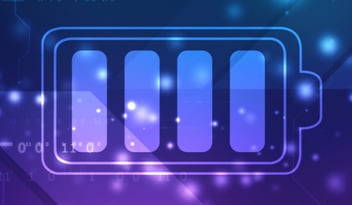

Exploring Cellular IoT Applications in Healthcare
In the rapidly evolving world of technology, the integration of the Internet of Things (IoT) in healthcare is poised to revolutionize patient care and operational efficiency. Velos IoT stands at the forefront of this technological advancement, offering innovative solutions powered by Cellular IoT.
This blog explores the myriad use cases and applications of Cellular IoT within the healthcare sector, illustrating the transformative potential of this technology.
Cellular IoT in healthcare refers to the use of cellular networks to connect IoT devices, enabling seamless communication and data sharing. This connectivity underscores several critical applications that enhance healthcare delivery.
1. Remote Patient Monitoring
Remote patient monitoring represents one of the cornerstone applications of IoT in the healthcare sector, offering a transformative approach to patient care. By harnessing the power of Cellular IoT, healthcare providers are empowered to continuously track and manage patient vitals, including crucial metrics like heart rate, blood pressure, and glucose levels, without the patient needing to be physically present in a healthcare facility. 
This seamless and uninterrupted real-time data transmission ensures that any concerning changes in a patient’s health status are promptly detected, allowing healthcare professionals to intervene swiftly and effectively.
Such timely interventions can prevent complications from arising, significantly enhancing patient safety and care quality. Furthermore, by reducing the necessity for frequent in-person hospital visits, patients experience greater convenience and comfort, while healthcare facilities can allocate their resources more efficiently. The overall impact is a marked improvement in patient outcomes, as this technology facilitates a more proactive and personalised approach to healthcare tailored to the specific needs and conditions of each individual.
If you want to learn more about Remote Patient Monitoring, download our guide.
2. Medical Asset Tracking and Equipment Management
Cellular IoT can significantly enhance asset tracking and management in healthcare facilities. By attaching IoT sensors to medical equipment, healthcare providers can monitor the location and status of these assets in real-time. This can help prevent loss or misplacement of equipment, reduce downtime, and improve the utilization of assets.
Furthermore, cellular IoT can support predictive maintenance of medical equipment. By continuously monitoring the condition of equipment, IoT sensors can detect potential issues before they lead to equipment failure. This can help healthcare facilities avoid unexpected downtime and ensure the availability of critical medical equipment when it is needed.
3. Smart Medication Management
Smart medication management is another healthcare IoT application where Cellular IoT solutions bring a new level of sophistication and reliability. These advanced systems are designed to meticulously monitor medication adherence, playing a pivotal role in ensuring that patients take their prescribed medicines as scheduled.
By utilising connected devices, patients receive timely reminders and prompts to take their medications, fostering a regimented adherence to their treatment plans. In cases where there is any deviation or non-compliance, these systems can promptly alert healthcare providers, enabling them to take necessary actions to address the issue. This proactive approach is particularly beneficial in managing chronic conditions, where consistent medication intake is crucial for effective management and to prevent exacerbations.
4. Wearable Health Devices
Cellular IoT plays an indispensable role in the operation and effectiveness of wearable health devices. These sophisticated devices, including smartwatches, fitness trackers, and other health monitoring gadgets, are equipped with advanced sensors that diligently collect a wide array of health data from users. This information encompasses vital signs such as heart rate, steps taken, calories burned, sleep patterns, and even more complex metrics like blood oxygen levels and ECG readings.
Once collected, the data is seamlessly transmitted over cellular networks to healthcare providers in real-time, enabling an uninterrupted flow of information. This real-time connectivity fosters a robust framework for continuous health monitoring, allowing healthcare professionals to maintain a vigilant watch over patients' health statuses.
As a result, any potential health issues can be identified at the earliest possible stage, empowering timely interventions and preventive measures.
In conclusion, Cellular IoT applications in healthcare offer substantial benefits, including improved patient monitoring, efficient resource management, enhanced medication adherence, swift emergency response, and expanded telemedicine capabilities. These advancements not only streamline healthcare operations but also significantly elevate the standard of patient care.
For healthcare providers and organisations looking to stay at the forefront of technological innovation, exploring these IoT solutions is imperative. Visit our healthcare IoT solutions page to learn more about how Velos IoT can transform your healthcare delivery through advanced Cellular IoT applications.
Speak to a Velos IoT expert
Related articles


Effortless Connectivity Management with Nomad IoT Platform
The Velos IoT Nomad Connectivity Management Platform gives you full control over connectivity...

Is your IoT tank-level monitoring performing at its best?
Welcome to a new era where the Internet of Things (IoT) seamlessly merges the physical and digital...

